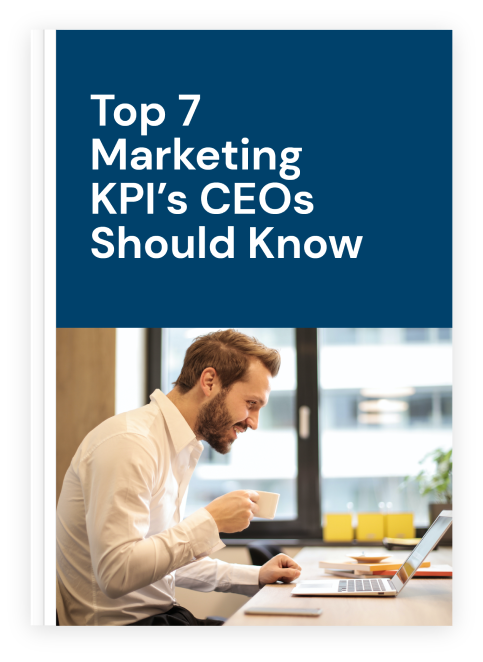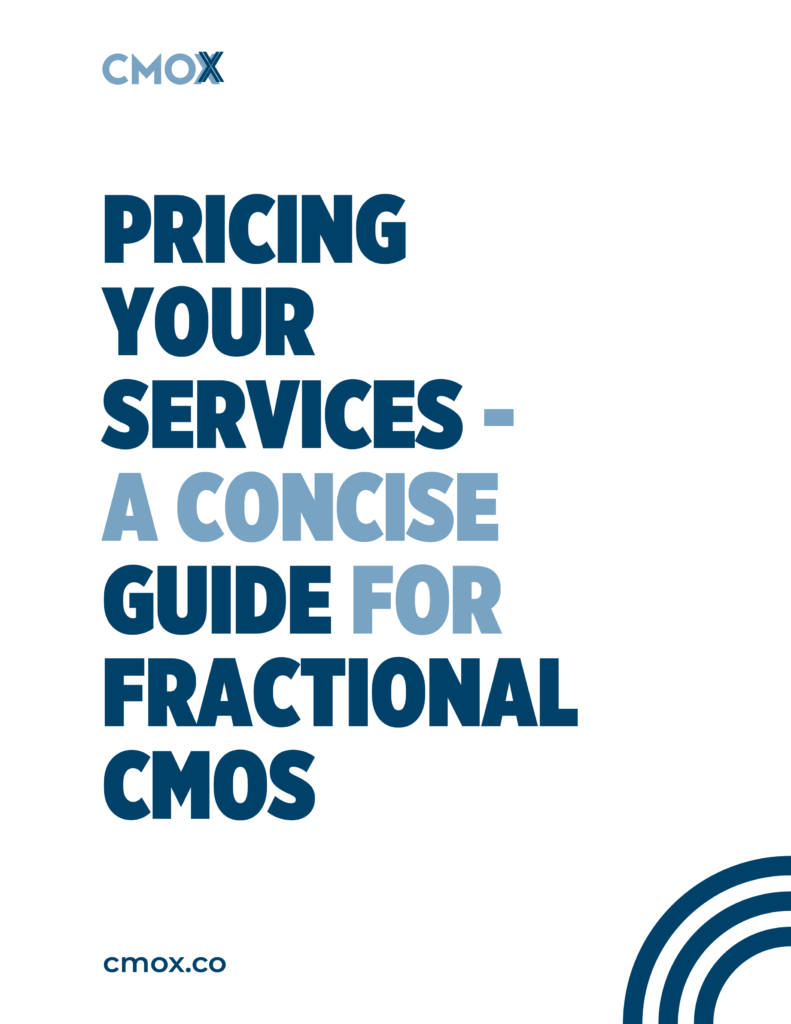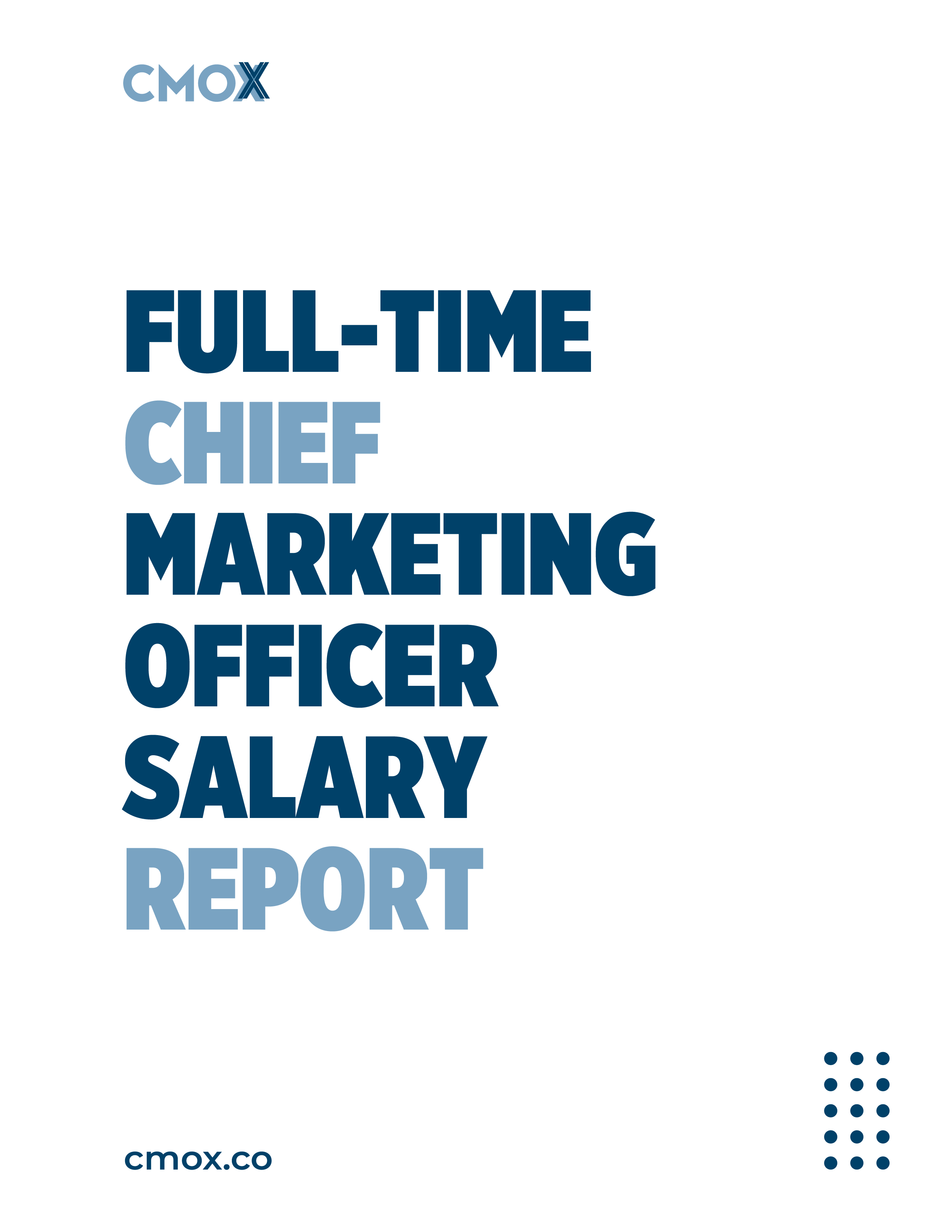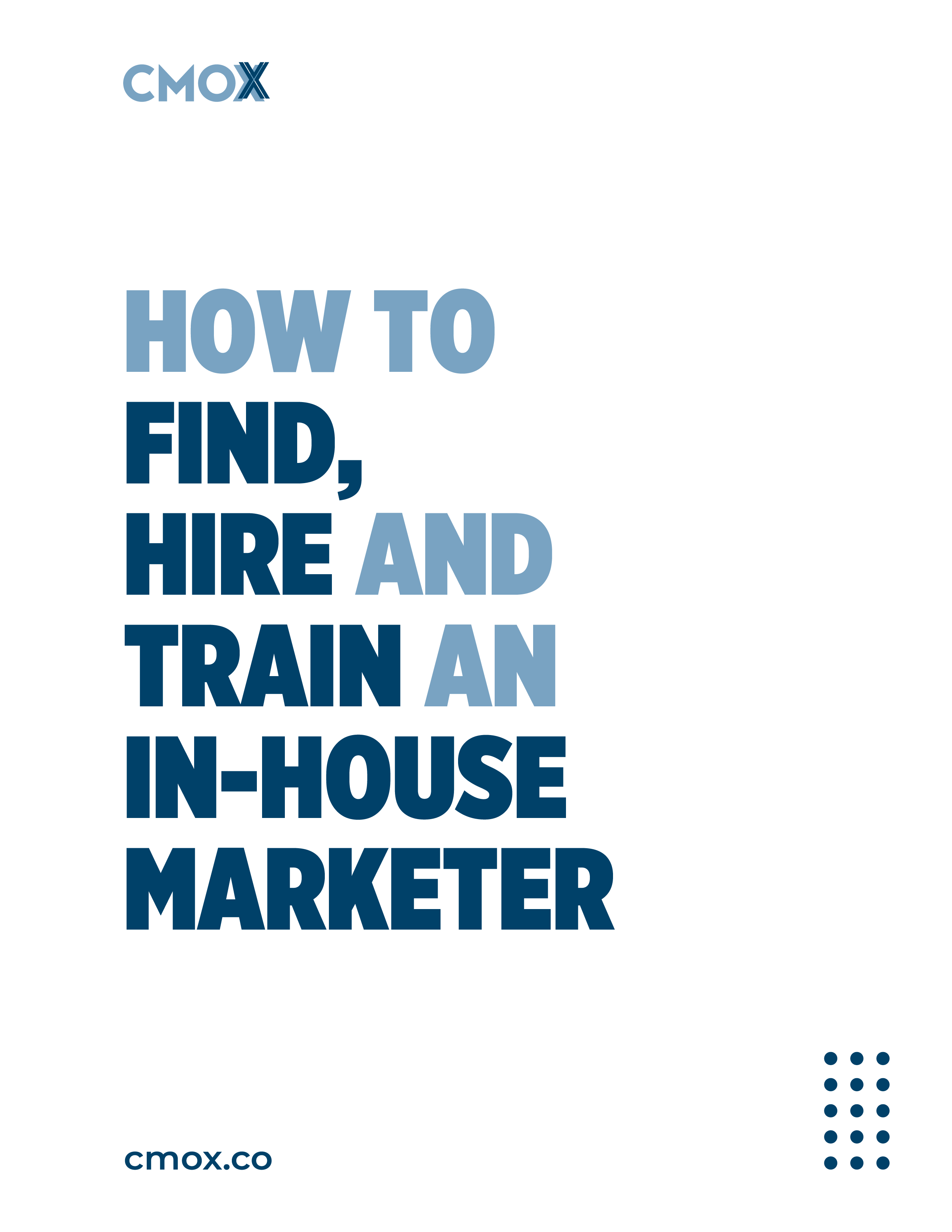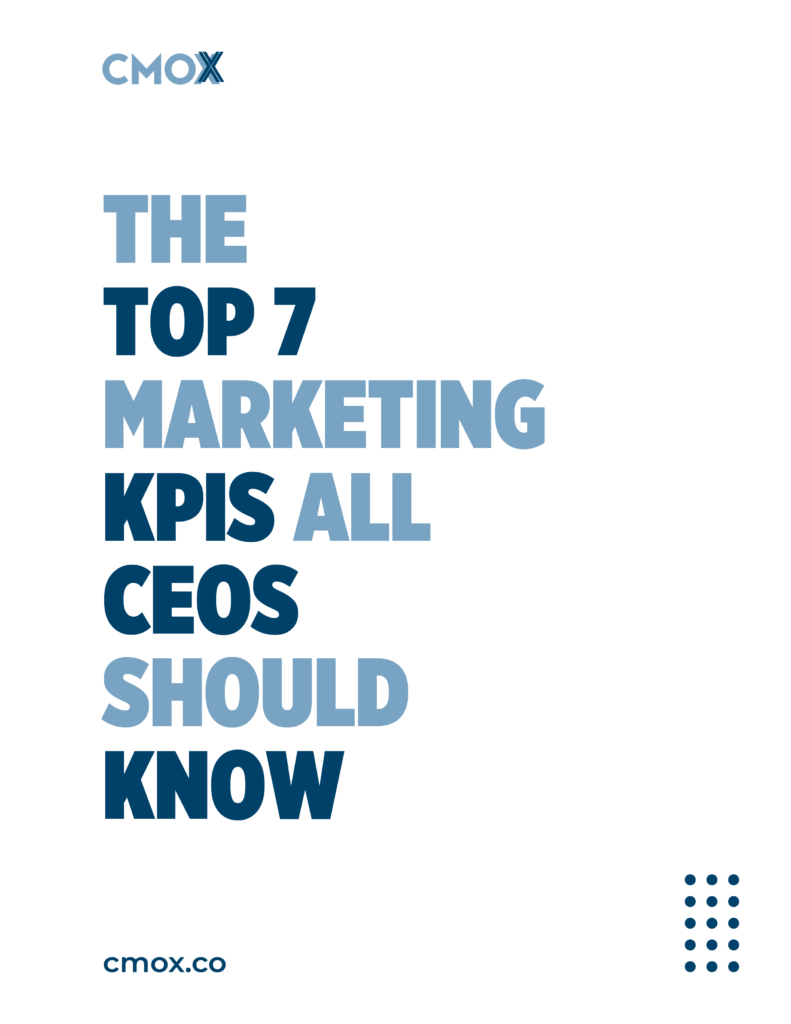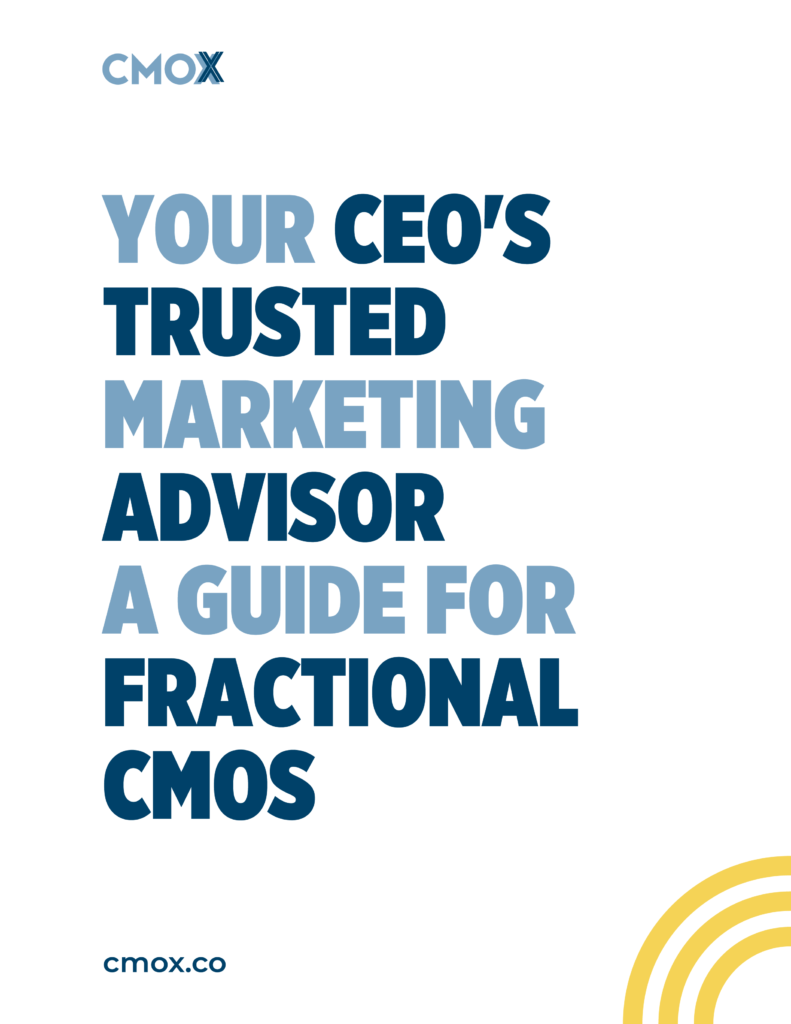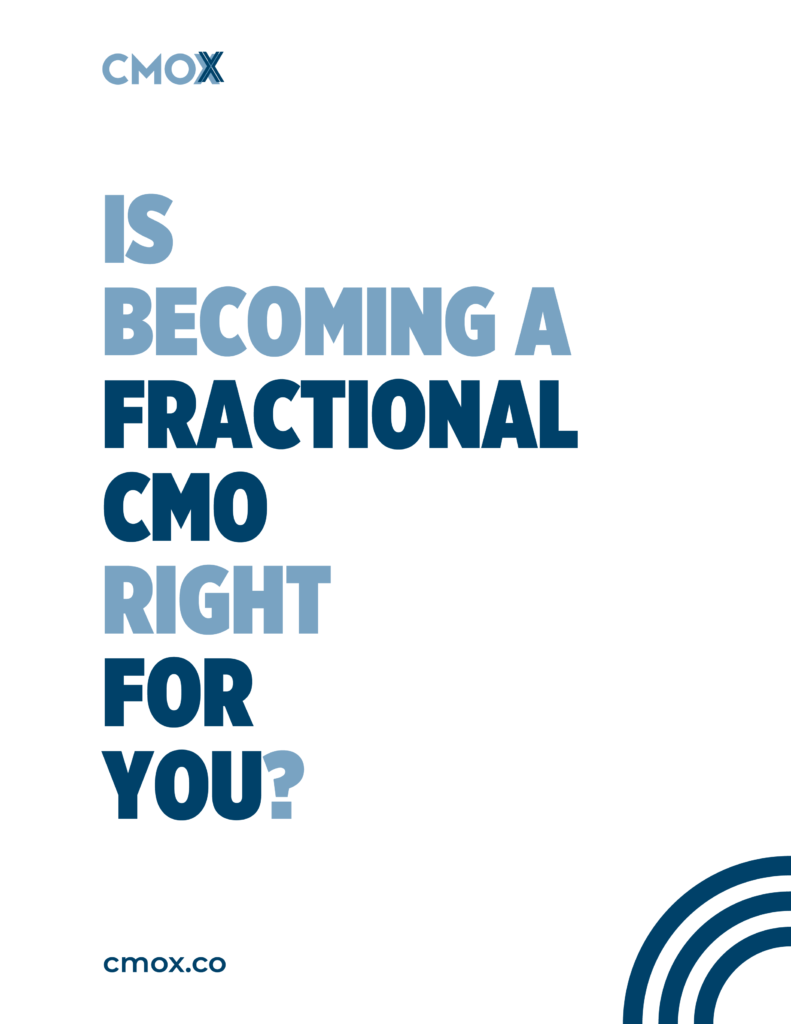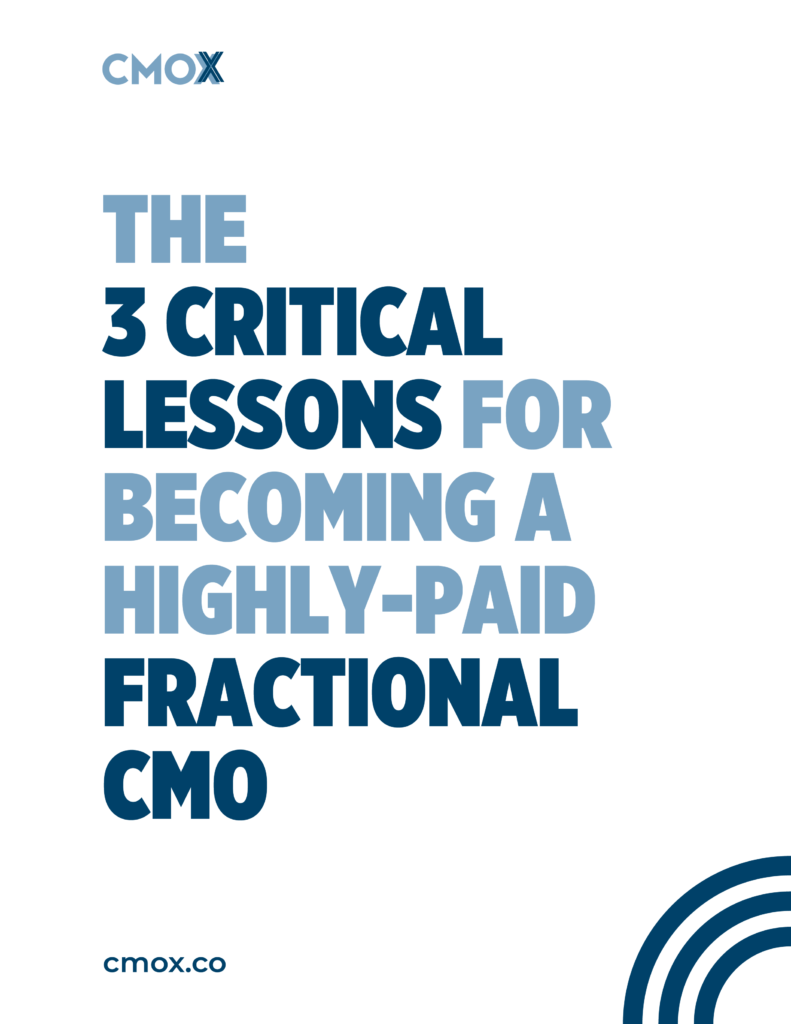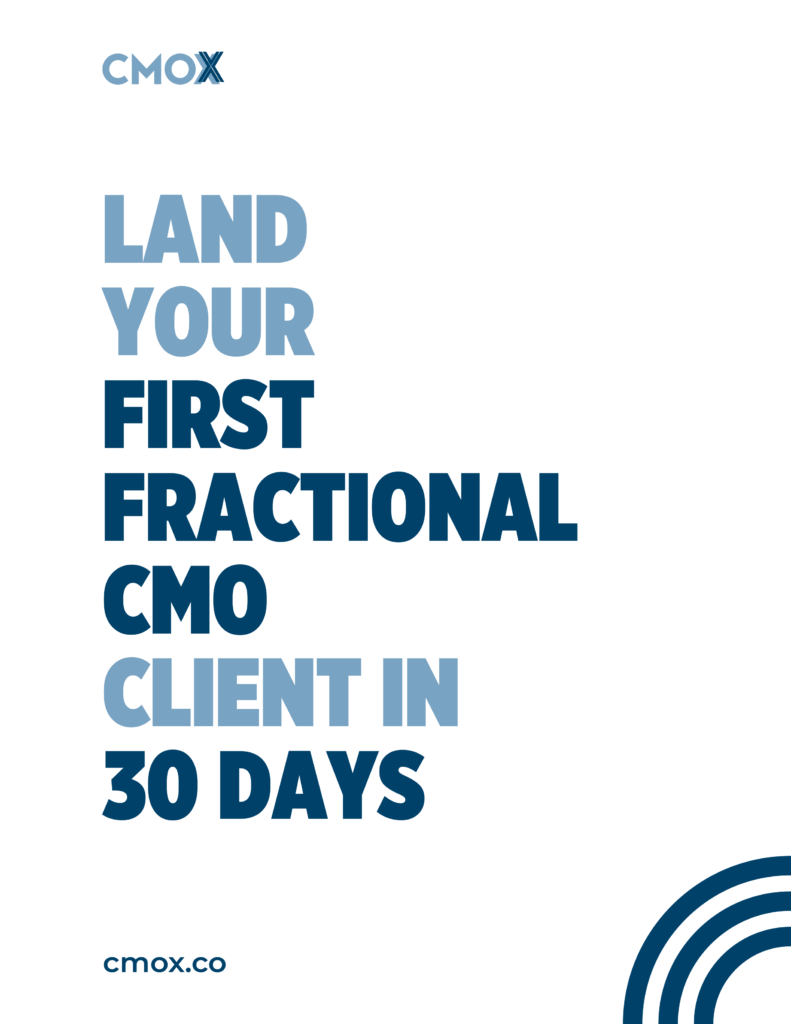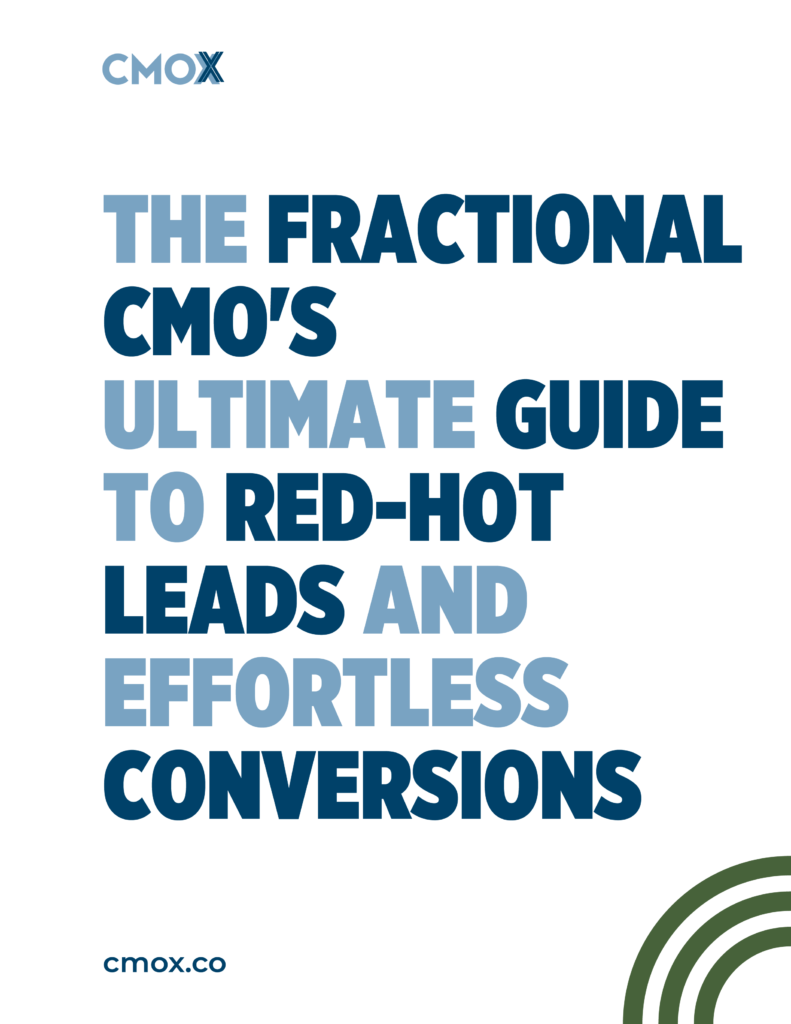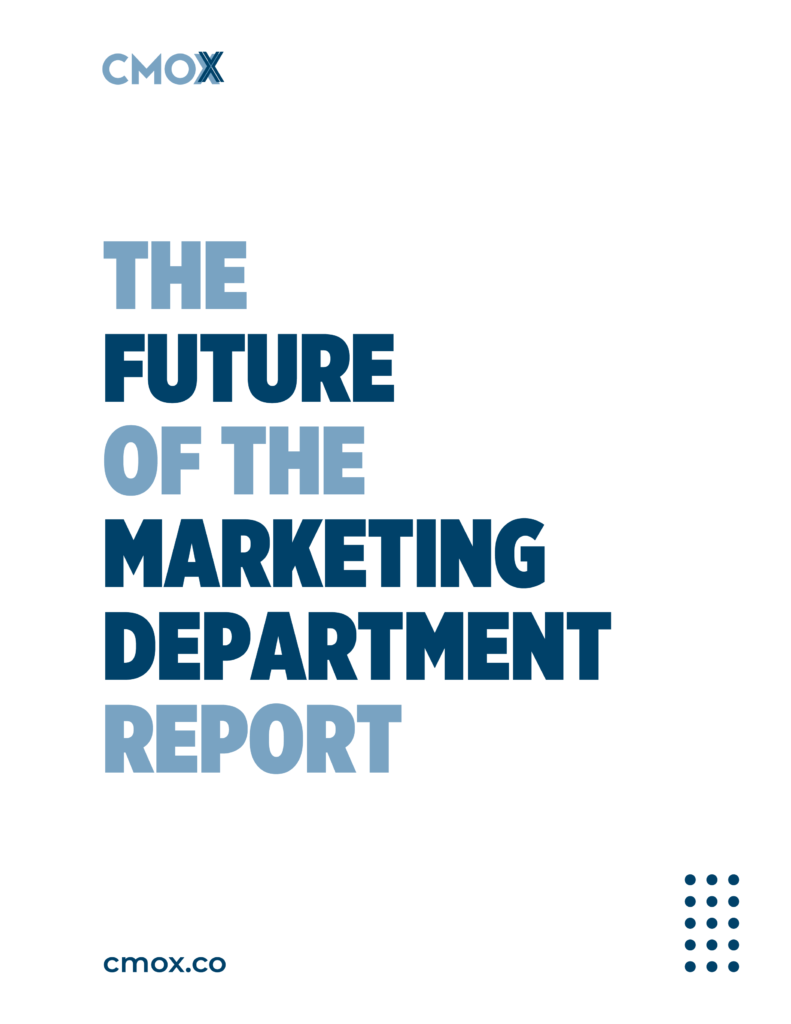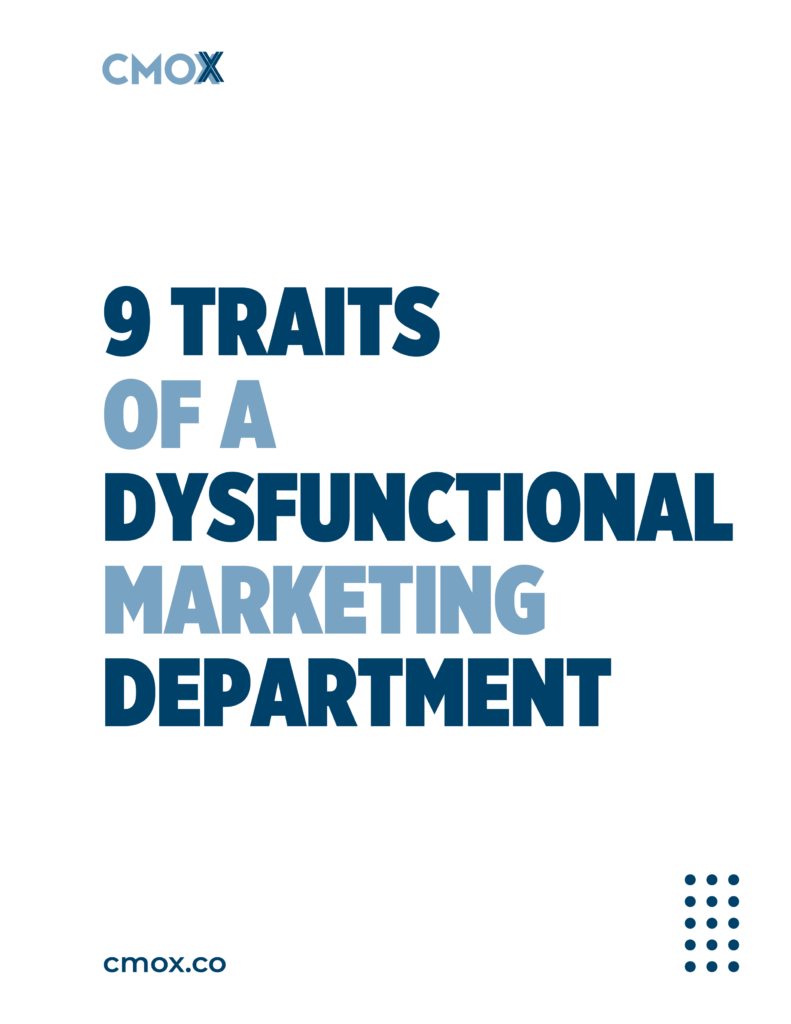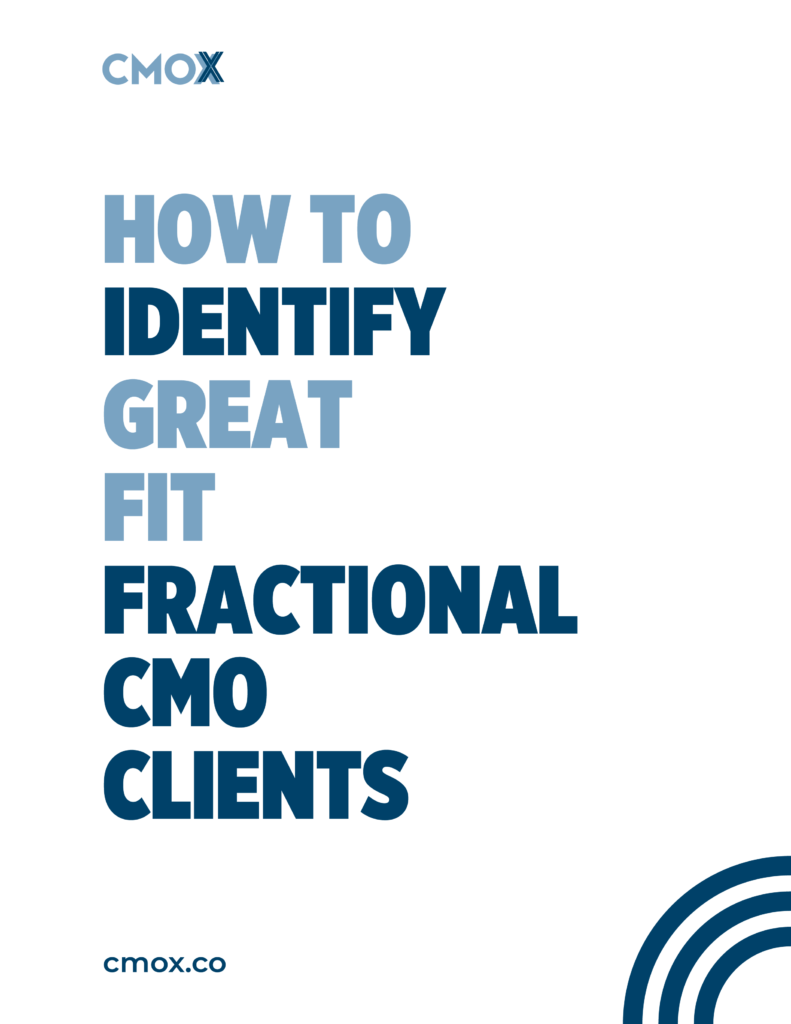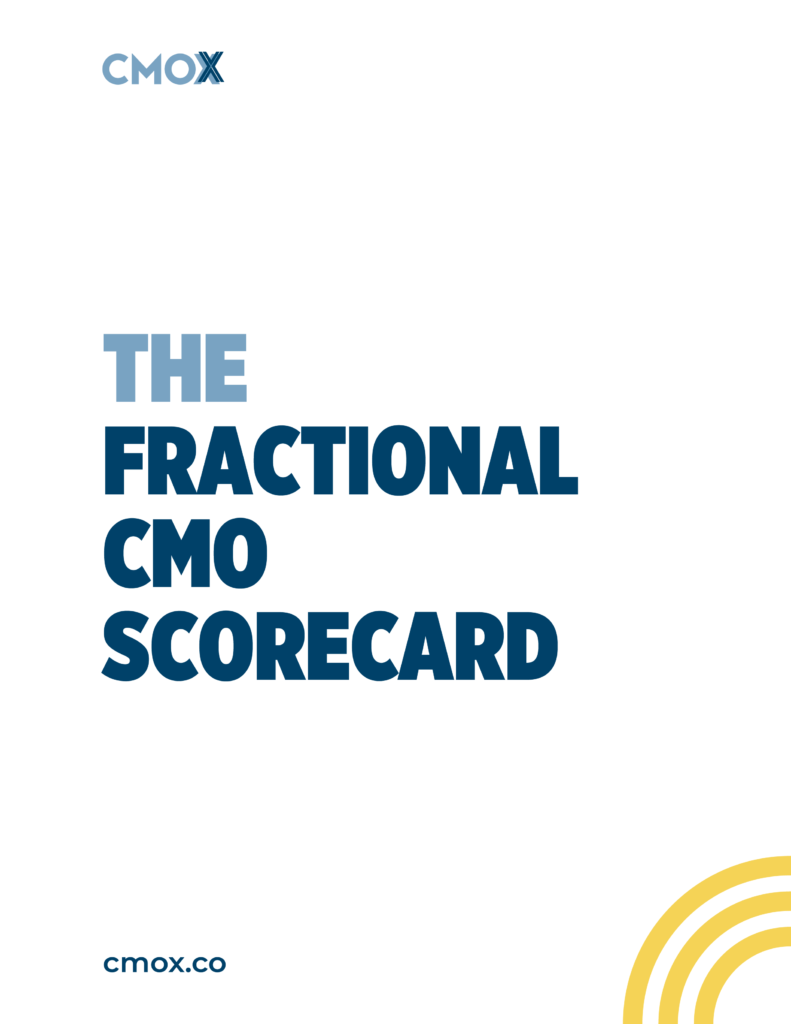Ep #108: Fractional CMOing for Equity

In this episode of The Fractional CMO Show, Casey Stanton challenges the hype around “consulting for equity” and delivers a sharper, more lucrative path: earning upside as a Fractional CMO – without getting tangled in risky cap tables.
Casey breaks down why equity is often a mirage and why true leverage lies in performance-based revenue sharing. He shares the unique power Fractional CMOs have to elicit real change inside organizations – unlike consultants or advisors – and how this access gives them an unmatched opportunity to capture upside. You’ll learn how to structure smarter deals, set non-negotiable cash rates, and build a portfolio of short and long-term payoffs across multiple clients.
Packed with mindset shifts and tactical advice, this episode is your blueprint to work with hungry, fast-moving entrepreneurs, avoid dead-end retainers, and create life-changing income as a Fractional CMO who solves for speed, not cost.

Episode highlights:
In this episode of The Fractional CMO Show, Casey Stanton challenges the hype around “consulting for equity” and delivers a sharper, more lucrative path: earning upside as a Fractional CMO – without getting tangled in risky cap tables.
Casey breaks down why equity is often a mirage and why true leverage lies in performance-based revenue sharing. He shares the unique power Fractional CMOs have to elicit real change inside organizations – unlike consultants or advisors – and how this access gives them an unmatched opportunity to capture upside. You’ll learn how to structure smarter deals, set non-negotiable cash rates, and build a portfolio of short and long-term payoffs across multiple clients.
Packed with mindset shifts and tactical advice, this episode is your blueprint to work with hungry, fast-moving entrepreneurs, avoid dead-end retainers, and create life-changing income as a Fractional CMO who solves for speed, not cost.
🔑 Key Topics Covered:
- Why equity isn’t the ideal vehicle for upside
- How Fractional CMOs uniquely earn performance-based upside
- Importance of charging full cash rate before negotiating upside
- Structuring a portfolio of clients with varied risk and reward
- When to approach clients: M&A, funding rounds, or founder readiness
- What to look for in high-potential, fast-moving entrepreneurs
- The power of positioning yourself as the best
- Why being a true leader inside the company drives better outcomes
Transcript:
00:00:00 Casey: In today’s episode, I’m going to dive in on how you can become a fractional CMO for equity. That’s how do you make upside, how do you make more money as a fractional CMO. People talk about consulting for equity. And I think of that as misleading because I think you lack something very specific that a fractional CMO has access to. In today’s episode, we’re going to dive into that. Let’s go.
00:00:21 Casey: Marketers of the world, why do we work hard to solve small problems? Why do we reinvent ourselves and our clients over and over, and why are we giving away marketing strategy for free? With advancements in AI, we’re all seeing the marketing department shrink from the bottom up, and companies need you to serve them as their fractional Chief Marketing Officer. It’s time to solve bigger problems and bring home a bigger paycheck. It’s time to create the lifestyle we deserve and to make a greater impact. This is the Fractional CMO Show, and I’m Casey Stanley. Join me as we explore this growing industry and learn to solve bigger problems as marketing leaders. The Fractional CMO Show is sponsored by CMOx, the number one company to teach you how to attract, convert, and serve high paying fractional CMO clients on your terms.
00:01:17 Casey: Hey. It’s Casey. Welcome back to another episode. I have missed you. I’ve been out for a couple weeks and I’m excited to share a big idea for you, which is how you can do fractional CMO work for equity. And first of all, that’s the headline. I’m going to go so far to say is I don’t think you should get equity. Alright? So I misled you with the whole headline of this. I don’t think you should get equity, but I do think you should get upside. And your upside should be in a different vehicle than equity because I think equity is… it’s rare for folks that have equity forever to pay out. So I don’t want you to get equity necessarily, although it’s an option, but I want you to get upside.
00:01:53 Casey: So really, it’s fractional CMO-ing for upside. That’s this big idea. And I want to tell you why this is unique for fractional CMOs. No one else has this opportunity. Consultants don’t have this opportunity. Advisors don’t have this opportunity. Boards don’t have this opportunity. It’s just different being a fractional CMO. So, let’s just dive right into it.
00:02:17 Casey: Why don’t consultants have the opportunity to get the same kind of upside that we get as fractional CMOs? And I think, like, the number one reason is because they lack the day to day oversight, getting in the foxhole with the team, and really getting the outcomes that are necessary. So it’s like this. When I was a consultant, I would be held to an outcome I have to grow the client’s business but then I wouldn’t be deputized to actually do the work. Right? I wouldn’t be deputized to lead the team. I wouldn’t be given a budget. It was, like, my ideas and then hopefully, I’ve, like, won the trust of the team to do it. But I have no, like, opportunity to shuffle people around and really do what was necessary to elicit the change inside of the business that was required to get the outcome.
00:03:02 Casey: So as a consultant, I used to come in and I’d make whatever a month. It doesn’t even matter. Right? $5 grand, $10 grand a month, more. And I just, like, would swoop in and I’d give my ideas and then I’d kind of not be able to do anything with it. It’s like I was just talking. Do you remember when you were a kid and a babysitter came over and the babysitter had rules? And you were like, Yeah, I don’t think so. Right? Like, those rules don’t apply to me. That’s how it kind of feels when you’re a consultant. The team looks at you and they’re like, Okay. So you’ve got some ideas. You’re the asshole who’s coming to tell us what to do, and you’re not going to be around long enough for us to actually get the outcome. So we don’t really have to listen to you. So being a consultant, you lose a lot of the ability to create the change. You can have the world’s best idea, but if you can’t elicit change inside of the organization, then nothing’s ever going to come true.
00:03:50 Casey: So I think, by and large, like, being a fractional CMO dramatically changes everything. Remember, you have… you’re deputized as the leader in the marketing department. You get to dive in and uncover what’s working with the teams, what’s not, and then put together the dream team that’s right for the company with your strategies, and then they’re executing it. I have a high level of confidence that I’m able to get smart people, like, find them, pull them onto a project, get them hired by the client so the client pays them directly, never comes out of my pocket. Big deal. Big deal. And I lead them to do my bidding, which is also the CEO’s bidding, which if I’m smart, I’ve structured a deal so that I’m getting paid out on upside too. I’m confident I can do that. I am not confident I can come in and just tell people what to do and not really have any ability to change their behavior and then expect some kind of outcome. That’s kind of crazy. Right?
00:04:40 Casey: So as a fractional CMO, you have this incredible ability. Also, the whole fractional part, you know, why? Why do I want that? Because I want to be doing this to multiple companies. Like, maybe I could get more work done. I don’t know. I guess you could wager I could get more work done as a full time CMO for a single company, but that ties up a lot of their capital, which I don’t think is the best place to tie up capital. Is it, like, in my fees? And secondly, it makes me too reliant on one customer, you know, one client, one company. I want a couple opportunities rolling at once. I want one opportunity that pays me really well monthly and another opportunity that pays me good monthly, but really well with an upside that’s committed in twelve months. And I want another one that might be longer off in the horizon, like two years out, where the payday on that is potentially nothing. But if it hits, it hits real big. And that’s a really exciting place to be, where you’re covering all of your bills with your clients, plus you have upside at different levels of risk.
00:05:34 Casey: You know, some people are day traders and they want to go throw their money at a stock… and buy and sell stocks multiple times a day. That’s it. That’s one view. Other people do the boggle head approach of just having a really simple portfolio of a couple different mutuals and they just buy and hold forever until retirement and then they start selling off stocks and buying some bonds and just calming things down. Two different levels of risk. Two different levels of potential reward. I kind of like to play it across the board. I want someone who pays me just straight cash every month. Easy peasy. They know what they’re getting. I know what I’m getting. It’s easy. All good.
00:06:08 Casey: I like other folks to pay me with a shorter term upside that’s good. It’s not incredible, but it’s good. Then I do like to have longer term upside that pays me something that can be life changing. It’s completely possible for you as a CMO to structure a deal where you get paid well, not incredibly well, maybe, but you get paid well every month on time. The first of the month, you get paid for the month ahead, and then you have a million dollar payout that’s coming in two years. That’s realistic. That is absolutely a possibility, but it takes a lot of opportunities. It takes a lot of deal making. It takes a lot of, like, getting in front of the right prospective customer, right, prospective client, right, prospective partner to find the ones that you want to actually get in bed with. That’s what it looks like. It just takes time. So yes, it’s possible to have huge upside.
00:06:59 Casey: And I don’t think you can do this in any other role in marketing. Media buyers can’t do this. What does a media buyer do? They buy media. What happens if the budget gets tightened? What if the sales team isn’t closing the deals? What if the finance team starts to do all their stuff? What happens if HR is slow to whatever? As the CMO, you’re the top dog in the marketing department and you get to call all of the shots for marketing. That is incredible. That is your ability to elicit the change that is required to get the outcome for your client, which gives them a payday and you a payday. It is unique.
00:07:29 Casey: So let’s talk about some other things. When I think of who gets these opportunities, when I see it inside of my CMOx Accelerator, the people who get these opportunities are the ones who are really cornering the market at being the best. And, arguably, are they the best? I think some of them are, but some of them aren’t. They’re not the best. They’re good, but they’re not the best of the best. They’re not the most experienced. But they’ve cornered the market, and they’re labeling themselves as the best, and then they’re doing what’s required to be the best.
00:08:01 Casey: It’s a funny thing. Right? Like, are you the best, pragmatically? If I look at your CV and see all the work that you’ve done, are you the best that’s out there? Maybe, maybe not. If you’re not, then it’s about getting in front of the right people and just kind of structuring how you talk in a way that they see you as someone being very great and very effective at solving their problems. Over time, I want you to become the best. I want you to fight like hell to be the number one fractional CMO in your industry. That’s where the fun is. That’s when people start coming to you, and you pitch a new high price, and they say, Yeah, that makes sense. Sure. Yeah. Sure. Can we start? That’s where you want to be because you pay the most for the best.
00:08:42 Casey: When you go to Patek Philippe’s website and you look at their watches, you’re like, yeah. It kind of makes sense that some of these watches are going for $60, $70 grand, for their lower end models. Like, that just makes sense. Right? It’s a wristwatch. It just makes sense that they charge that amount because they have the preeminent brand for it. We’re not talking about Rolex. Rolex is, like, a step below. Right? We’re talking about, like, the top brands. Richard Mille, is that how you say it? Like, those watches going for a quarter of a million dollars? Crazy. But to people, they believe that it’s worth that. You want to create that kind of structure. Also, as you might be thinking, Casey, that’s crazy to spend $250,000 on a watch. Yeah. Might be. But for the right audience, it’s not crazy, and it’s aspirational, and they want it, and they want to be the kind of person who does it. So if that product or service doesn’t exist at that premier pricing, you know, like, people just won’t pay for it. But if it exists, odds are you’ll get customers.
00:09:37 Casey: Alright. So I want you to be the best. That’s number one, is just to be the best. That’s how you start winning these opportunities, but you have to always set your fee in cash to get started. That is my… just recommendation. Hear me on this one. The people who lose are those who say, sure. I’ll take X amount a month with upside. And we could talk about upside channels, but that’s the idea that they come that they, like, go and present to a prospective client. And I just think it’s wrong. You never start, ever start, at, like, a discounted or deferred rate. You have to do your best to charge upfront, for one month, your full cash rate. So is your full cash rate 10,000 a month? Great. It’s a good number. 7,500? 5,000? Fine. 15,000? More? Fine. Whatever. It doesn’t matter. Charge it for one month.
00:10:27 Casey: If someone pays it one month, not only do they believe you, but they’ve also paid you that amount and they get it. So I like to start working with a client for one month and get paid that, and then uncover in that month how you structure the rest of the engagement, the rest of the agreement. And at that point, you can discount your cash. So you say, hey. I charged you $10. I’m like, how about this? I’ll take some risk on myself, and I’ll only charge you X amount, but then I get this upside. Or some of the CMOs – I love it. They start working with companies, and they charge high prices, and then on top of that, they charge additional percentages, like a percentage of revenue. It’s an amazing way to do things.
00:11:06 Casey: So you just can’t start by discounting yourself, and you certainly can’t take on exclusively like equity. To me, equity is dangerous. I think it is like a four letter word. I don’t want equity. I want revenue share. Like, when you make a dollar, I want to make 10¢ on it. I want to make 7¢ on it, 5¢ on it, 12¢ on it. That’s what I want. I don’t want equity. I don’t want to get called to the cap table when you need to do a funding round, and I don’t want to pony up a bunch of money, and as a result, I’ll lose part of my shares. Right? I don’t want that. I don’t want to be watered down on the cap table. So I just want revenue shared. I want it committed and contractual.
00:11:43 Casey: Alright. Where do you find these clients? I think it’s not that easy, I’ll be honest with you. Even for me, talking to folks… even, like, really trying to fight for these opportunities, certainly not everyone I talk to is ready to have this kind of conversation. I’m having a great conversation with a great entrepreneur right now, and there’s a huge opportunity for us to work together. However, they have to make some major life decisions about what they want to do with their companies. If they let go of one company, they can focus on this other company that we both think there’s a lot of opportunity for. But the downside is that company has a partner in it, and this entrepreneur loses some freedom when they give up this full control over an absolutely profitable and successful company.
00:12:27 Casey: So they’re fighting with what they want to do. I know if they make certain decisions that I’m in a great position to help them and I can reduce my cash compensation and make some upside on it. It would be an awesome deal for me, but it also may never come. It’s also taking months to get here. Months. And that’s okay. It’s completely reasonable that this person is taking months to come to a decision. My urgency to want to work on a new project or I need the money or whatever it is, that can’t weigh into their thought pattern on making a commitment for what they’re doing in their business.
00:13:01 Casey: So you need to find people that are at some inflection point. And for this person, they were at kind of an inflection point, and I was able to uncover it and kind of bring it to a head. Right? I kind of, like, got to push forward and say, like, Is this what you want, or is that what you want? It feels like you should decide. That was kind of the conversation, and they’ve been saying, I’m deciding. Right? It’s taken them a while to decide. Again, totally reasonable, totally fine. Nothing I’m going to do is going to push that along faster, but I’m going to be there in support. And if it moves in a certain direction, man, I’m going to grab it and I’m going to run with it, and we’re going to make a lot of money together. And if not, we’ll part as friends. That’s fine too. I mean, literally, they’re both fine outcomes for me. Do I want the opportunity? Yeah. I think it would be a lot of fun. It’d be fast paced. It’d be hard. I’d have to build a brand new team, but I think the reward would certainly be worth it, and I kind of really like what they’re up to. So, right, that’s, I think, a good place to be.
00:13:53 Casey: Alright. So what are some of these inflection points where these things can happen? I think, M&A is an inflection point. So when a company is going to merge with another company. I mean, really, the acquisition side of M&A. So they’re going to go buy another company. What are they doing to buy a company? Well, they’re strong in capital. So think of this. Financial advisor going to buy multiple financial advising companies. They’re like, Hey, we’ve got a billion dollars in AUM and want to go pick up a couple $100,000,000 AUM financial advisor practices across the state or whatever. So as they go and do that, the money pencils. It just makes sense. It’s a financial thing. We know that they’re going to make X amount of money on the management, plus they have the headcount, plus they’re going to absorb some stuff, they’re going to let go of the real estate, whatever. Boom, it’s profitable for them, kind of from the start.
00:14:42 Casey: But what the risk is for them is reputation risk. And as the fractional CMO, you can come in and support all of the marketing stuff around it to support their reputation. If their reputation gets burned on a deal because they kind of flop it and a bunch of the customers of the acquired firm start complaining on Google, Facebook, Yelp, and all that stuff it’s really negative. So they’ve got a lot to lose. So you stepping in and helping these companies that are growing through acquisition, that can help. They’re at a point where the risk of getting it wrong is so significant.
00:15:15Casey: Another one is folks that just got a series funding. So they got a series A, series B, series C, they got a venture fund round, whatever the thing is, friends and family, mezzanine, whatever they’ve just got some money, and they have to spend the money. I’ll tell you that venture capital doesn’t want to invest in a company and have that company just sit on the money for five years. They want them to spend the money, take a risk, and hopefully make it big. So a good way to help is to jump in at that point and to support companies that are getting funds, getting fundraisers. But those aren’t my favorites.
00:15:52 Casey: My favorite is just when the CEO is just ready. You talk to them and you can feel it. It’s palpable. They kind of flare their nostrils. They’re like greyhounds in the slips. They’re, like, ready. Right? They’re just, like, eager to go do something big. They’re like, alright. I kind of got through the bullshit to get here, and now I’m ready to go. Now I’m ready to get big. Now I’m ready to be, like, the hungry one, the juggernaut in the space, and they’re ready to just, like, attack. Those entrepreneurs, by far, are my favorite to work with.
00:16:25 Casey: And I don’t care what their revenue size is because if there’s a committed entrepreneur who’s kind of done the requirements to get to a level of, you know, maybe it’s a couple million dollars in revenue. Sometimes it’s less, but they’re just, like, positioned well to attack. Those people, man, those are the ones I want to work with. Those that are going to, like, outwork everyone, stay up late. They’re going to hustle. They’re going to figure it out. They’re going to build the right team. They’re not afraid to spend the money that’s required to build the dream team around them. They’re also coachable. They’re friendly, the kind of people that you want to go out and have dinner with. Right? Like, those are the entrepreneurs I want to work with more than anything else.
00:17:03 Casey: So if there’s just one thing that I look for when I’m going to take on some risk with a client, it’s a vigor. It’s an eagerness. It’s a hunger. It’s a zeal, It’s a why not now? Let’s go. Let’s just dominate. Let’s fight for it. Let’s build the best team. Sometimes it’s because the opportunity is perfect for the market. Like, right now, there’s, like, AI pressures. Maybe that’s it. Maybe there’s pressures with the current debt structure in the US or what’s happening with stocks or, you know, where we are right now with the S&P or maybe it’s the housing market or maybe it’s new tariffs or there’s, like, some reason to where they could be like, now’s the time.
00:17:51 Casey: But there’s an energetic difference between, like, okay, guys. Like, now’s the time. Like, the US is repatriating a lot of manufacturing back to the US, so I guess we should grow the company, to, Hey, guys. We’re ready to grow this company, and look at all the signs that are pointing to our success. We’re going to go hard right now. I want everyone to lock in. I want to build this thing. We want to roll. We want to grow. We want to be aggressive. Those are the companies I want to work with. Those are the ones I want to take risk on because I want to move fast. I want to move hard. I want to have fun. That’s what I want for you, too. I want you to work with companies that are moving quickly.
00:18:25 Casey: There’s kind of a dream in being a fractional CMO consultant. I got this from consulting years ago, which is like, I want dumb, slow moving, well paying clients. I used to kind of like that idea, and man, now I just don’t want it. I don’t want the slow moving, dumb clients that pay consistently. That’s boring. It loses attention. There’s no interest there. There’s no life force. It doesn’t attract great people. You work with just mediocre people then.
00:18:57 Casey: But on the other hand, if you’re working with a company that might not have the huge war chest of capital, but you believe in the entrepreneur and you got paid upfront for at least the first month, and then you dropped down your rates and you’re taking some upside, and you believe that it’s going to come true and that upside is not equity, that upside instead is like some other vehicle that actually pays you out on a monthly or quarterly basis in cold, hard cash or a commitment after a year or two that you’re going to get cashed out at a big rate… like, if you can focus on those entrepreneurs, it’s going to be way better. You have the ability to create change inside of the organization because you’re deputized as the CMO, the leader, the number one, the top dog.
00:19:38 Casey: Let me tell you, I’m in an organization right now, and today I was on with the executive leadership team. There’s four of us. There’s the owner, the finance guy, the ops guy, and me. That’s it. We run the company. The four of us run the company. And I have an equal seat at that table. They had some ideas today I disagreed with. We kind of fought back and forth. They were right. I conceded. They were happy. I was happy. Whatever. Right? Like, that happens. Other times, I come fighting for my ideas. They dislike them. I fight. They concede. We go with my ideas. Those things happen. I’m a leader at the table. You can be a leader at the table. You can be a leader next to the salesperson or maybe above the salesperson even. Sometimes salespeople don’t have a sales manager. Right? You can still lead that department, maybe even settling into the role of the chief revenue officer, which I believe is predicated on being a good CMO and then adding in sales oversight and all that stuff.
00:20:29 Casey: So it’s this… this is, like, the best opportunity, I think, to make a ton of money as a marketer, but also to create great change. And it’s what we do in the Accelerator. It’s so much fun. We just had a member just join from the Island Of Reunion, which is off the coast of Madagascar. Incredible. We’ve got great members all over the world. Chatting this morning with my team, John said that… he thinks Antarctica is the only continent that we don’t have a member from, which is pretty cool. So we’re on every continent. We’re in a ton of countries. These CMOs are winning clients, serving clients, making a big change, and making a really great living doing it. And if you want my help, I’d love to help you.
00:21:15 Casey: You can just get my book. How about that? Just go ahead and grab a copy of my book. It is at cmox.co/book. cmox.co/book. Go and snag it. It’s $5. It’s $4.99. You get the ebook. It’s a PDF, a MOBI, so you can read it on your Kindle, EPUB, and also an audiobook that I recorded in the sound booth just for you, professionally edited. Sounds pretty good. If you like my voice, I guess it sounds good. It’s all there for you for $5, and it will lay out the strategy on how you can become a fractional CMO. It’s like a three and a half hour long audiobook, so you can probably knock that out on the treadmill or on the Peloton, and just see if you’ve got what it takes to be a fractional CMO. See if this really is the path for you.
00:22:02 Casey: As I think about it more and more, all of the opportunities that I have… like I run CMOx. I’m a business owner. I can live in the world of business owner stuff. And, man, the most fun thing to do is go find other successful business owners and go take my jetpack and strap it to their business and blow it to the next level, and then go on to the next one and the next one all along the way collecting a paycheck. I’d rather do that than start a new business. I don’t want to be in the business of starting businesses. I want to be in the business of taking a good business and blowing it up. That’s what you can do too. You can just step right into these companies and help them and make a ton of money as they make even more money. It’s just a beautiful thing. Alright. If you want my help, buy the book. You can also book it a call at cmox.co/call. But, certainly, just get the book. Read it. Alright? Hope you’re well. See you. Bye.
00:22:48 Casey: Thank you for sticking around for the full episode. As you know, learners are earners, but you’ve got to take action on what you heard today. For more information and show notes, visit fractionalcmoshow.com. If you’d like me to answer your questions on an upcoming episode, you can share your question at fractionalcmoshow.com. And last, please hit the like and subscribe button so that I know that this content is helpful to you. Alright. Go get them.
Join Our Community
We are excited to announce the Fractional CMO Community Facebook Group. This aims to be a place where Fractional CMOs or marketers considering becoming a Fractional CMO can connect and share ideas.
Locations CMOx® serves
- New York
- Philadelphia
- Los Angeles
- San Francisco
- Chicago
- Houston
- Dallas
- Austin
- Miami
- Atlanta
- Denver
- Boston
- San Diego
- Seattle
- Portland
- Minneapolis
- Milwaukee
- Detroit
- Phoenix
- Washington D.C.
- St. Louis
- Toronto
